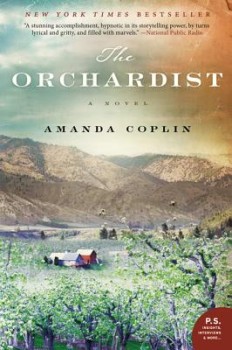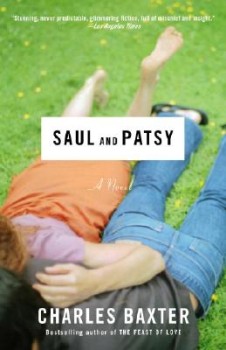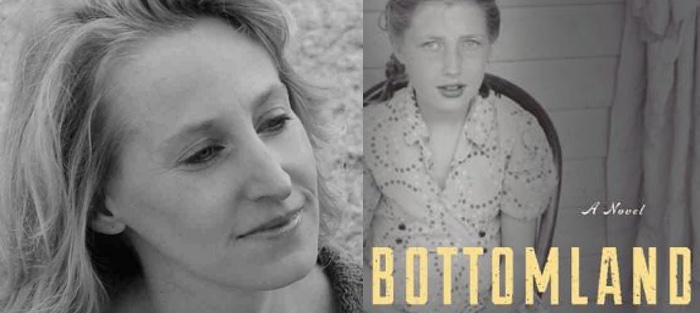At first, students in my course on fairy tales are not happy customers. The stories are so dark. They are violent, uncannily erotic. They exist in a world where metaphor and reality swallow the reader with united force. And they are unforgettable. “Exactly,” I respond.
What I believe bothers my students so much is the possibility that the protagonists may well bring their troubles upon themselves, that their own flaws and fears are being tested. In identifying with the heroes of such tales—as readers often do—the students are forced to wrangle with their own darknesses and fallibility. This is uncomfortable business. But in fiction, it makes for a haunting read. And it also may explain the resurgence of such works in recent years, in writing as well as film and television. By the end of the course, my students ask for recommendations for more.
But the discovery of a character’s inner “big bad wolf” is just as important in realistic fiction as it is in a tale. In fact, I would argue more so. As Bruno Bettelheim has said, “If there were not something in us that likes the big bad wolf, he would have no power over us.”
A story has its wolves—the external obstacles that take physical and often odorous form—but what kind of wolves should a writer choose? Writers can throw their characters into any old catastrophe to force the story to move, but there are more bad choices than good, and the former breed melodrama or worse. No obstacle will prove particularly problematic to a character, let alone dramatically engaging, if it doesn’t in some way resonate with the protagonist’s internal struggles: his or her own unique recipe of self-loathing, vanity, blinders, and obsessions. The character draws the obstacles to him like a magnet. And yes, something in the character may even like it. This is what makes the obstacle so difficult to overcome in the first place.
Henry James tells us: “What is character but the determination of incident? What is incident but the illustration of character?” It is character that “determines” the author’s choices of external events. And it is character that is further “illustrated” by his or her reactions to these events. In a visit to my Boston University classroom, author Josh Weil explained a similar process in creating his plots: “I find a character’s wound,” Weil said, “and I poke a stick at it.” The source of this wound is what I have come to refer to as the protagonist’s Wounding Event, a traumatic moment in the character’s life that often far precedes the story’s present.
According to Weil the “wounding event” is the event that sets the character’s most significant flaws and fears into place, the event that essentially sets the character into place. Wherever it appears in fiction (if it appears explicitly at all), it often determines the “incidents” in the story’s present that will most resonate. The protagonist’s mask is forcedly removed. He or she stands naked before us. It is in this nakedness that we recognize both the character’s particular humanity as well as our own.
Look again at the traditional structure of fairytales. After much rule breaking, isolation, and/or unhappy banishment, the hero of the tale “is assigned a task, and the task is a sign,” writes scholar Jack Zipes. “That is, his or her character will be stereotyped and marked by the task that is his or her sign.” The task assigned to the protagonist is most often determined by the character’s flaw or weakness, and this flaw must be tested. The task then continues to characterize the protagonist as the story progresses.
For instance, Hansel and Gretel’s insatiable hunger forces them into the forest where they find an enormous gingerbread house. Their ability to overcome the similarly insatiable witch signifies their transformation, and the very experience of gingerbread houses and pushing witches into ovens marks the characters forever in our minds. Little Red Riding Hood’s budding sexuality and her inability to “stay on the path” invites the wolf to her grandmother’s door. Her task marks her to such an extent that its cause—the red hood and the coming-of-age that the hood signifies—becomes her name. Cinderella’s task—serving among the cinders of her stepmother’s kitchen—marks her in the same way. Character determines Incident. Incident illustrates Character.
Flannery O’Conner tells us that a story is only complete when it has exposed the character’s mystery. In this way, many of our favorite protagonists haven’t necessarily “changed” by story’s end but simply revealed their hairy backsides. In Guy de Maupassant’s “The Necklace,” a female protagonist obsessed with appearances is fooled when she borrows what she considers a priceless necklace to attend a once-in-a-lifetime society ball. Her inability to see the necklace’s worth determines her test. She soon loses the object, and her decision to save face instead of admitting to the loss further reveals the extent of her character. By the last page, she has lost her good looks to ten years of near slavery to try to pay the debt, becoming “a woman of impoverished households… with frowsy hair, skirts askew, and red hands.” She has transformed into the very image of her earlier fears, and in the final lines of the story, the owner of the necklace reveals to her that the object was made of “paste.”
 In the economy of the short story, the Wounding Event is often left out entirely, though it may be hinted at: In “The Necklace,” the protagonist’s flaw has been created by a lopsided class system alongside a society that clings to wealth and privilege above all else.
In the economy of the short story, the Wounding Event is often left out entirely, though it may be hinted at: In “The Necklace,” the protagonist’s flaw has been created by a lopsided class system alongside a society that clings to wealth and privilege above all else.
In novels, the Wounding Event may also remain unexpressed, simply part of the writer’s own background knowledge of the protagonist and story—the submerged section of Hemingway’s iceberg. But whether made explicit or not, that knowledge is often still necessary to make the iceberg float.
In her novel The Orchardist, Amanda Coplin refers to the Wounding Event in narrative summary in the early chapters. The protagonist, William Talmadge, loses his only sister and remaining family member in his early twenties. The girl simply disappears from their isolated orchard. Only her bonnet is found hanging from the limbs of a tree. This event haunts Talmadge for the rest of his life:
He did not articulate it as such, but he thought of the land as holding his sister—her living form, or her remains…. All that space would conjure her, if not her physical form, then an apparition: she might visit him in dreams, and tell him what had gone wrong, why she had left him…. It was a gift to himself as well, to be surrounded by land, by silence, and always—but how could this be, after so much time?—by the hope that she might step out of the trees, a woman now, but strangely the same, and reclaim her position to the place.
Here again, the character’s Wounding Event spurs the novel’s present day incident—two homeless, starving, and pregnant teenagers appear in his orchard and eventually become quasi-adopted daughters. The effect of these teenagers on Talmadge would feel empty or even suspect without the earlier event of the lost sister. The fact that the loss remains a mystery ensures that the event will forever remain present. And Talmadge’s desperation to protect the girls, at the risk of his own life, becomes the central storyline of the book.
In Ian Frazier’s Cold Mountain, we experience young Inman’s wound—his participation in a particularly bloody Civil War battle—as a flashback in the first chapter as he convalesces at a veteran’s hospital. This emotional wound is mirrored by a physical one, a gash on his neck that never quite heals, even as he attempts to make his way home. Since he is AWOL, a group of bounty hunters follow his every step, so he can never truly leave his Wounding Event behind. Because he is running away from it, it will follow him until he either destroys it or it destroys him. In Helen Oyeyemi’s Boy, Snow, Bird, the sound of the caged rats Boy Novak’s father tortures in their basement—“lak lak lak lak, krrr, krrrr, krrr”—works similarly. It echoes like a chorus through the book, caging Boy in a past she long ago tried to escape.
In William Trevor’s Felicia’s Journey, Mr. Hilditch preys on innocent girls. His own wound, the event that turned him into a monster, is the incest he suffered as a child at his mother’s hands. This wound isn’t revealed until the crisis that precedes the novel’s climax. Locked away in his house, worried that his most recent victim has escaped him and will report him, Hilditch suffers dizzying memories of his mother’s abuse. The present and the past intertwine in an operatic frenzy that causes Hilditch’s downfall. The Wounding Event arrives to us structurally only when it is most useful to the present day story.
In fiction, we prefer our protagonists to have some culpability for the story’s events, be it the loss of a handkerchief or the beginning of a war. For good reason, we have yet to leave behind Aristotle and what he claimed to be the highest possible response from an audience—Pity and Fear. We might pity a character who is a victim, but victims make for dull reading, keeping the character at arm’s length and ensuring an over-simplified emotional response. Instead, we should also fear that the same might happen to us, because we share the protagonist’s flaws and fears as our own. This is the idea that often left my fairy tale students squirming in their seats. The most important part of a character’s Wounding Event is the darkness and fear it represents, a darkness that the character will soon have to face head on—as will we.
 In Charles Baxter’s Saul and Patsy, Saul’s self-loathing and isolation as a Jewish man in a small Midwestern town brings the novel’s later incidents into being—a nonverbal teenager who takes up residence on Saul and Patsy’s lawn, watching the house with a blank gaze and a gun in his lap. The teenager’s attitude toward Saul embodies Saul’s every fear. The gun, of course, eventually goes off. In Bernard Malamud’s The Tenants, Harry Lesser holes himself up in an abandoned apartment building to finish his latest novel, only to come face to face with the figure of his very dread—another writer, also seeking asylum in the building, whose style and productivity mock Lesser’s own. The novel begins: “Lesser catching sight of himself in his lonely glass wakes to finish his book.” The first line signals an interior journey mirrored by the exterior, and by story’s end, the exterior seems to have won.
In Charles Baxter’s Saul and Patsy, Saul’s self-loathing and isolation as a Jewish man in a small Midwestern town brings the novel’s later incidents into being—a nonverbal teenager who takes up residence on Saul and Patsy’s lawn, watching the house with a blank gaze and a gun in his lap. The teenager’s attitude toward Saul embodies Saul’s every fear. The gun, of course, eventually goes off. In Bernard Malamud’s The Tenants, Harry Lesser holes himself up in an abandoned apartment building to finish his latest novel, only to come face to face with the figure of his very dread—another writer, also seeking asylum in the building, whose style and productivity mock Lesser’s own. The novel begins: “Lesser catching sight of himself in his lonely glass wakes to finish his book.” The first line signals an interior journey mirrored by the exterior, and by story’s end, the exterior seems to have won.
In William H. Gass’ story “The Pedersen Kid,” the unhappy son of an abusive farmer and a feckless mother faces a malevolent force that has killed most of his neighbor’s family during a blizzard. The son has often wished to do the same to his own parents and their diddling farmhand, and the novella eventually offers him his chance. At the end of the story, the boy ruminates dreamily on what has been lost and gained: “The way that fellow had come so mysteriously through the snow and done us such a glorious turn….” “That fellow”—the killer—could very well be the protagonist himself, as Gass never offers a clear description of the villain save for: “Just his back. The green mackinaw. The black stocking cap. The yellow gloves. The gun.” The abuse the protagonist has suffered from both father and farmhand is the wound. The wound drives the boy to pay both men back in kind. The boy’s flaw and the incident that drives the story are almost one in the same. He is the wolf in the storm.
Does the idea of a Wounding Event sound like pop psychology? Possibly. But I’ve never found a deeper way to explain what ties characters and the obstacles they face together. E.M. Forster famously defines plot as “The king died, and then the queen died of grief.” As opposed to a mere “story,” plot requires a causal relationship between events, a “why” to explain the connection between A and B. Of course this “why” is most often character motivation. It is an emotional reaction to one event that causes the second, a reaction rooted in the character’s internal landscape. When my students tell me they aren’t very good or even interested in “plotting,” I worry that it is a deeper understanding of their characters that suffers instead. Any sense of a Wounding Event, of the mystery behind a character’s flaws and fears, proves absent. In the literary world, plot is still a dirty word, structure suspect, yet character development trumps both. What better way to unveil the mystery of a character, to bare his very humanity, than to properly pave the way for the feral stranger at his door?






